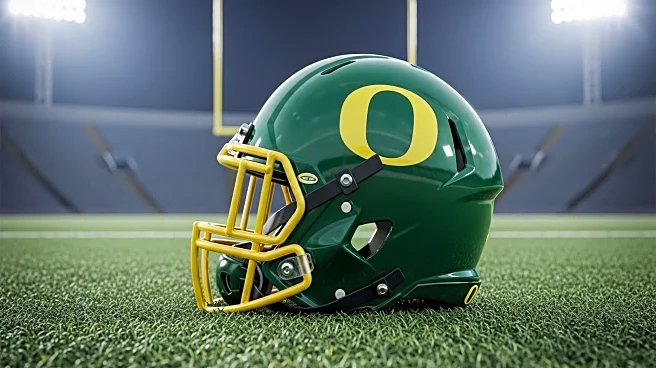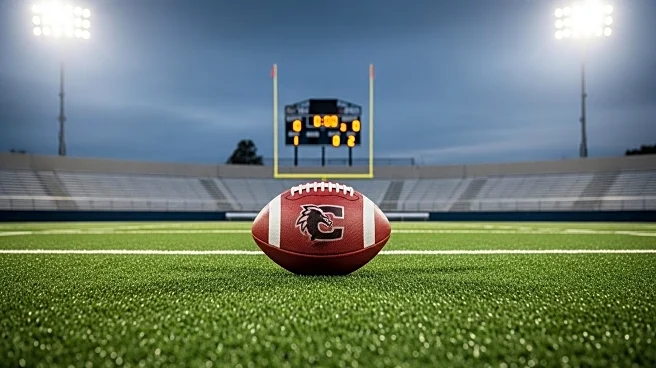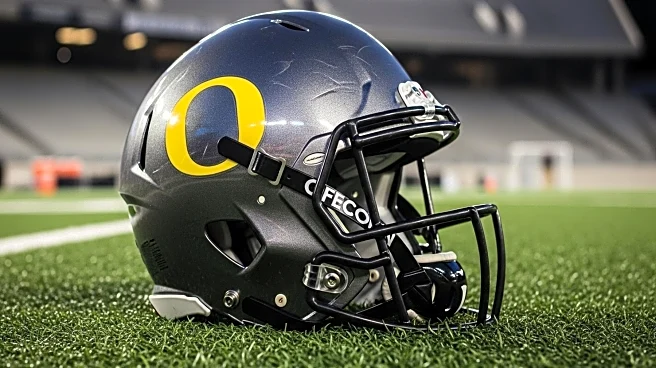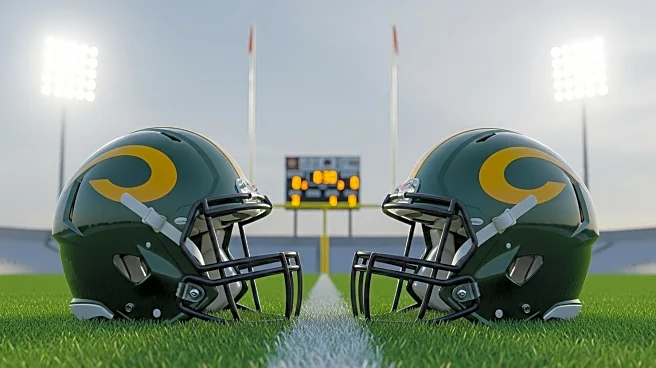What's Happening?
Oklahoma State coach Mike Gundy has publicly commented on the financial disparity between Oregon and Oklahoma State's football programs ahead of their upcoming game. Gundy highlighted Oregon's significant financial investment in its football team, noting that the Ducks have elevated their program over the past few years. He mentioned Phil Knight's support for Oregon athletics and emphasized the Ducks' strong team performance. Financial documents reveal that Oregon's projected revenue for fiscal year 2025 was $162,796,266, compared to Oklahoma State's $120,979,600. Specifically, Oregon projected $24,615,000 in football ticket revenue and $41,597,568 in operating expenses, while Oklahoma State projected $9,624,000 in ticket revenue. Gundy also discussed the impact of NIL compensation, estimating Oklahoma State's spending at $7 million over three years, while Oregon reportedly spent close to $40 million last year.
Why It's Important?
The financial disparity between college football programs like Oregon and Oklahoma State highlights broader issues in collegiate sports, including the influence of money on team performance and competitiveness. Oregon's substantial investment in its football program, supported by figures like Phil Knight, allows it to attract top talent and resources, potentially skewing competition in its favor. This situation raises concerns about the sustainability of smaller programs and the impact on fans who desire competitive games. The discussion around NIL compensation further complicates the landscape, as schools with more financial resources can offer better incentives to athletes, potentially widening the gap between programs.
What's Next?
Oklahoma State and Oregon are set to face off at Autzen Stadium, with the game serving as a test of the impact of financial investments on team performance. The outcome may influence future nonconference scheduling decisions, as Gundy suggested that financial considerations should play a role in such decisions. The ongoing debate about NIL compensation and revenue sharing may lead to further discussions among college sports stakeholders about the need for regulations to ensure fair competition. Additionally, the home-and-home series between the two schools will conclude next season in Stillwater, providing another opportunity to assess the financial dynamics at play.
Beyond the Headlines
The financial dynamics in college football raise ethical questions about the role of money in sports and its impact on student-athletes. The ability of wealthier programs to offer better facilities, coaching, and compensation may lead to an uneven playing field, challenging the principles of fair competition. This situation could prompt discussions about the need for policy changes to address financial disparities and ensure equitable opportunities for all programs. The cultural impact on fans, who may feel disenfranchised by predictable outcomes, also warrants consideration as the sport evolves.












